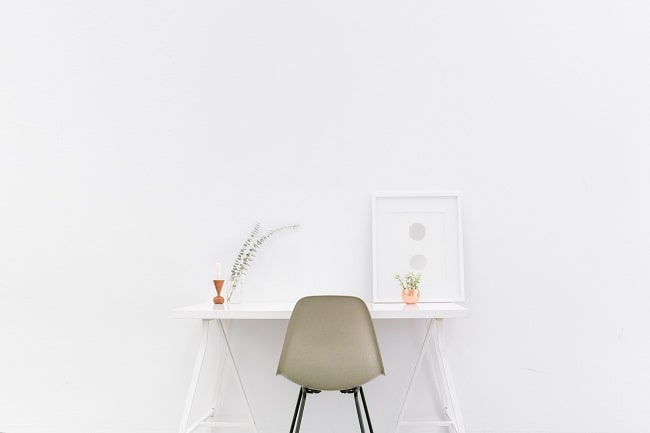Welcome to the world of minimalist living examples, where simplicity meets purpose and intentionality. Imagine a serene home, free from clutter, and a sense of liberation from the never-ending chase for material possessions. Minimalism isn’t just a trend; it’s a mindset that’s gaining traction across the globe. You might be wondering, “What is an example of a minimalist lifestyle?” Well, buckle up as we take you through the ins and outs of this transformative way of living.
In our previous article ‘The Benefits of Minimalism: Why Owning Less Can Lead to a More Fulfilling Life,’ we delved into the philosophy behind minimalism. Now, let’s take a closer look at a tangible example of a minimalist lifestyle and how it can be embraced in everyday life.
The Essence of Minimalist Living: A Look at Inspiring Examples
At its core, a minimalist lifestyle is all about living with intention and embracing simplicity. It’s like decluttering your life, not just your physical space. Minimalism encourages you to focus on what truly matters, cutting out the excess and noise that can weigh you down. It’s not about giving up comfort or style; rather, it’s about prioritizing experiences, relationships, and personal growth above material possessions.
More Joy, Less Stuff
Think about it: how often have you felt overwhelmed by the sheer amount of stuff you own? An example of a minimalist lifestyle encourages you to curate your belongings and keep only what adds value to your life. This doesn’t mean you can’t own nice things; it means you’re intentional about what you bring into your life. By letting go of the need to accumulate possessions, you create room for more joy, freedom, and even financial savings.
Examples of Minimalist Living at Home: Creating a Calm Space
One of the best minimalist living examples is creating a tranquil living space by decluttering and organizing your home. Your home is your sanctuary, and adopting a minimalist lifestyle can breathe new life into it. Imagine walking into a space that’s uncluttered, organized, and designed to promote relaxation. Minimalism at home means choosing quality over quantity. You invest in pieces that are functional, durable, and aligned with your aesthetic preferences.
Pro Tip: Start small by decluttering one room at a time. Ask yourself: do I use this? Does it hold sentimental value? If not, it might be time to let go.
A Day in the Life of Minimalism: Real-Life Minimalist Examples
Looking at minimalist living examples, you’ll notice routines centered on mindfulness, such as morning rituals and wardrobe simplicity. In a world that often associates success with accumulating possessions, embracing a minimalist lifestyle provides a refreshing alternative. Imagine a life where you intentionally simplify, focusing on what truly adds value and joy. A practical example of how someone might adopt a minimalist lifestyle, cultivating contentment through intentional choices.
1. Decluttering Possessions
The journey begins with decluttering – a process of purging unnecessary possessions and keeping only what matters. Room by room, items that no longer serve a purpose or spark joy are lovingly released. What remains are essentials and cherished items that hold sentimental value.
2. Capsule Wardrobe
A closet overflowing with clothes becomes a thing of the past. A minimalist opts for a capsule wardrobe, carefully curating a selection of versatile, high-quality clothing items. This approach streamlines daily choices, making getting dressed a breeze while ensuring a chic and timeless look.
3. Sustainable Shopping
Minimalism extends to shopping habits. Instead of mindless consumerism, the minimalist shops with intention. Quality triumphs over quantity, and each purchase is a deliberate choice. Items are selected for their longevity and alignment with personal values.
4. Digital Minimalism
Clutter isn’t limited to physical spaces. Digital minimalism involves decluttering digital devices and reducing screen time. Unnecessary files are deleted, and social media is approached mindfully. The result? A more focused and present existence.
5. Mindful Consumption
Before making a purchase, the minimalist considers its necessity and alignment with values. This intentional approach prevents impulse buying, directing resources towards experiences that enrich life rather than mere possessions.
6. Creating a Serene Living Space
A minimalist living space exudes tranquility. Decorative items are intentionally chosen, creating an atmosphere of calm. Surfaces are uncluttered, allowing space for mindfulness and creativity to flourish.
7. Embracing Digital Detox
Regular breaks from screens become a ritual. Technology takes a backseat to meaningful activities like reading, spending time outdoors, or pursuing creative endeavors. These breaks foster a deeper connection to the present moment.
8. The Power of Single-Tasking
Multitasking gives way to single-tasking – a practice that enhances productivity and mindfulness. The minimalist devotes full attention to one task at a time, resulting in a more focused and satisfying experience.
9. Prioritizing Value-Based Spending
Financial choices align with personal values. Experiences, education, and activities that foster growth take precedence over frivolous spending. This approach leads to a life rich in fulfillment and purpose.
10. Cultivating Gratitude
Minimalism magnifies gratitude. Daily practices of appreciating what’s present replace the desire for what’s absent. Gratitude fosters contentment and diminishes the allure of excessive consumption.
11. Embracing Minimalist Hobbies
Hobbies become avenues for simplicity. Minimalist pursuits like journaling, hiking, meditation, or playing a musical instrument require minimal equipment and emphasize experiences over possessions.
12. Steering Clear of Unnecessary Debt
A fundamental tenet of minimalist living is prudent financial management. Unnecessary debt is avoided, paving the way for financial freedom and stability.
Remember, minimalism is a personal journey. While the example outlined here is one path, the beauty of minimalism lies in its adaptability. Tailor it to suit your unique preferences and circumstances, and you’ll discover a life imbued with intention, contentment and a profound sense of fulfillment.
A Day in the Life of a Minimalist
Morning Rituals that Set the Tone
A minimalist morning begins with simplicity. Instead of rushing through a cluttered space to start your day, picture waking up to a serene environment. You’re greeted by the soft rays of sunlight filtering through sheer curtains. You engage in mindful activities like meditation or journaling, setting a positive tone for the day ahead.
Pro Tip: Create a designated space for your morning rituals. A comfortable chair by the window or a cozy nook can become your haven of tranquility.
Wardrobe Wonders: Dressing with Less
Ever stood in front of a closet full of clothes and thought, “I have nothing to wear”? Minimalist fashion is the solution. By curating a versatile wardrobe with timeless pieces, you simplify your daily routine and elevate your style. Picture opening your closet to a collection of clothes you love, each piece carefully chosen to mix and match effortlessly.
Pro Tip: The 30-day hanger experiment – turn all your hangers one way, and as you wear items, turn them the other way. After a month, it’s clear which clothes you actually wear.
Mindful Consumption: Food for Thought
Minimalism extends to your plate as well. A minimalist diet doesn’t mean bland or restrictive; it means being mindful of what you consume. Embrace whole, nourishing foods that energize your body and support your well-being. Picture savoring each bite without the distractions of excessive choices.
Pro Tip: Try meal prepping to reduce food waste and save time during busy weekdays.
Exploring an Example of a Minimalist Lifestyle: Frequently Asked Questions
Is Minimalism Only About Getting Rid of Possessions?
Minimalism is more than decluttering; it’s a mindset shift. While decluttering is a significant part of it, the essence lies in being intentional about what you bring into your life. It’s about valuing experiences, relationships, and personal growth over material possessions.
Is Minimalist Living Expensive?
Contrary to popular belief, minimalist living can actually save you money. By cutting down on impulsive purchases and focusing on what truly adds value, you’re likely to make more thoughtful and economical choices.
Can I Still Have Hobbies and Collections?
Absolutely! Minimalism isn’t about stripping away things you love; it’s about ensuring they truly bring you joy. If your hobbies or collections align with your values and contribute to your overall well-being, they have a place in your minimalist lifestyle. In fact, exploring how to incorporate your cherished hobbies and collections into your minimalist journey can be both fulfilling and enlightening.
If you’re wondering how minimalism and hobbies intersect, you might find our article “Are You Hesitant to Spend Money on Entertainment? Here’s Why You Shouldn’t Be!” to be a valuable read. It delves into how embracing a minimalist lifestyle doesn’t mean sacrificing enjoyment or experiences, but rather invites you to make deliberate choices that enhance your well-being.
How Do I Start Embracing Minimalism?
Begin with small, manageable steps. Choose one area of your life, whether it’s your wardrobe, digital clutter, or home decor, and start decluttering. Focus on what truly matters and gradually make intentional choices to simplify other aspects of your life.
Embracing an Example of a Minimalist Lifestyle: Your Path to Abundance
As we bid adieu, remember that embracing a minimalist lifestyle isn’t a one-size-fits-all journey. It’s about finding what works best for you and aligning your actions with your values. Whether you’re aiming to declutter your space, streamline your routines, or cultivate a deeper sense of gratitude, minimalism can pave the way.
So, what is an example of a minimalist lifestyle? It’s waking up each day with a renewed sense of purpose, surrounded by the things that truly matter. It’s about carving a path to a richer life—one that’s abundant in experiences, relationships, and fulfillment. Are you ready to take the plunge into minimalism? Your journey awaits!

